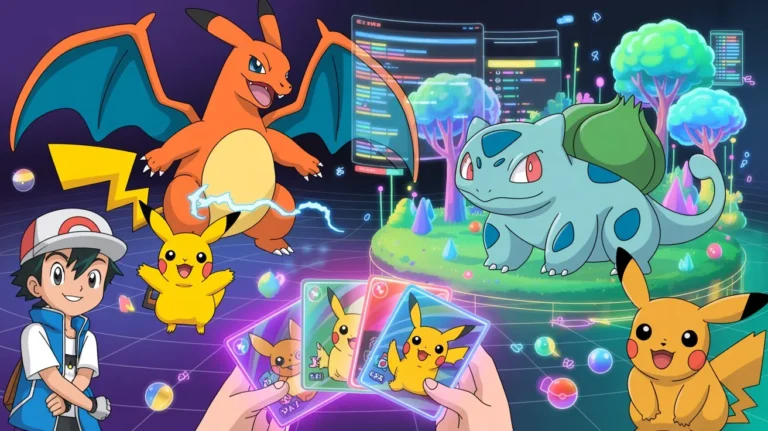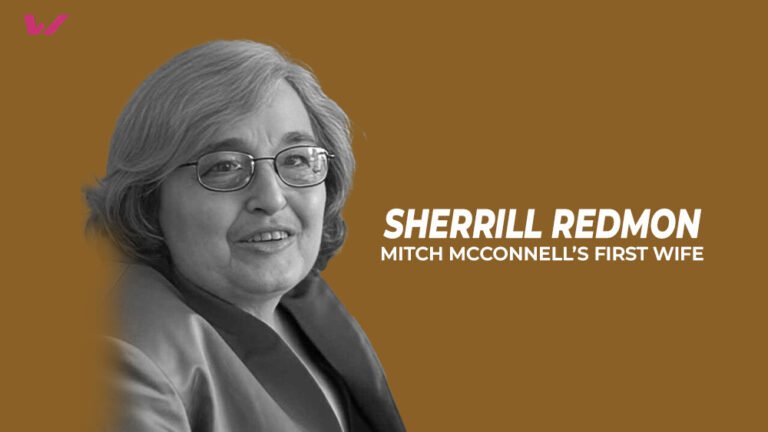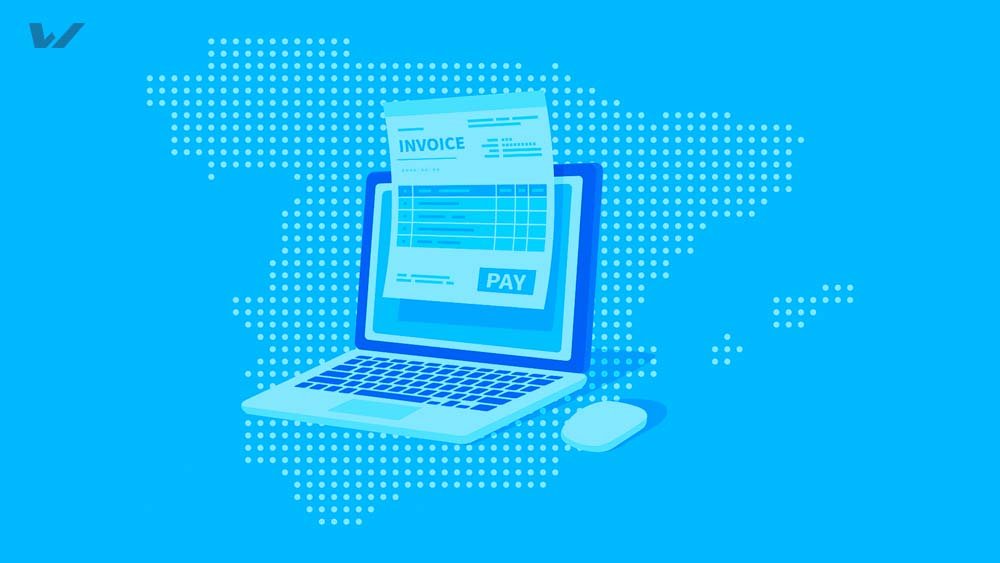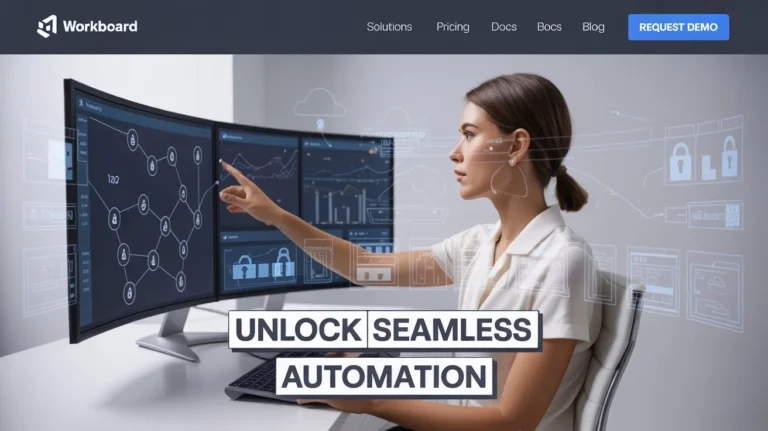How Much Does Facebook Pay for Views?
If you’re wondering how much Facebook pays for views, the short answer is that creators can earn anywhere between $0.01 per view to $5–$10 per 1,000 views—depending on content type, audience region, and ad engagement. Facebook doesn’t pay for every view; it only pays for monetized views where an ad runs or is watched long enough to generate revenue.
Facebook’s growing push toward creator income programs like In-Stream Ads, Reels Play Bonuses, and Stars makes it one of the most rewarding platforms for consistent video creators. Unlike YouTube, where ad rates are more stable, Facebook rewards real-time engagement and audience retention.
Example: A 3-minute gaming video with strong mid-roll ads might earn $5 CPM, while a lifestyle reel might average $1–$2 CPM. Understanding this variance is key before diving into monetization.
💡 Tip: The higher your content quality and viewer retention, the better your effective CPM and per-view earnings.
Facebook Monetization Eligibility Criteria in 2025
To qualify for monetization, Facebook pages and profiles must meet specific 2025 standards. These aren’t just vanity metrics, they ensure your content is advertiser-safe and worth promoting.
Here’s what you need:
- At least 10,000 followers on your page.
- 600,000 total watch minutes in the last 60 days.
- 5 active video uploads, at least 60 seconds each.
- Must follow Facebook’s Partner & Content Monetization Policies.
- Admin must be 18 years or older.
In some regions, Reels Ads eligibility is invite-only, meaning creators need consistent engagement to be approved.
Pro Insight: Meeting the eligibility threshold doesn’t guarantee earnings. You also need original content, regular posting, and high viewer interaction to stay eligible for ads and bonuses.
Facebook’s Payment Policies for Video Views
Facebook’s payment structure combines multiple earning models under one ecosystem. Understanding each helps maximize revenue potential.
Payment for Video Views
Facebook pays roughly $0.01–$0.02 per monetized view, depending on ad engagement, audience country, and CPM. For example, a US-based creator targeting finance audiences earns more than someone targeting general entertainment in Asia.
Facebook Reels Play Program
Creators can earn monthly bonuses up to $35,000 per month through Reels performance milestones. Though Meta phased out the Bonus Reels test in some countries, similar Overlay Ads and Performance Incentives remain active.
In-Stream Ads
Videos over 60 seconds can host pre-roll, mid-roll, or post-roll ads, splitting revenue 55% to creator / 45% to Meta. Longer watch time = more ad placements = higher income.
Monetization Methods
Revenue can come from Stars, Subscriptions, Branded Content, or Ads. Creators keep 100% of web-based subscriptions, while mobile subscriptions often return about 70% after app store fees.
Payment Schedule
Payouts usually arrive around the 21st of each month once you hit the $100 minimum threshold (some regions $25). Payments are processed through direct deposit or PayPal under your Creator Studio settings.
Expert Tip: Always verify your payout details in Meta Business Suite to avoid missed or delayed payments.
For more in-depth guides on social media monetization and creator earnings, visit WriteVerge.com.
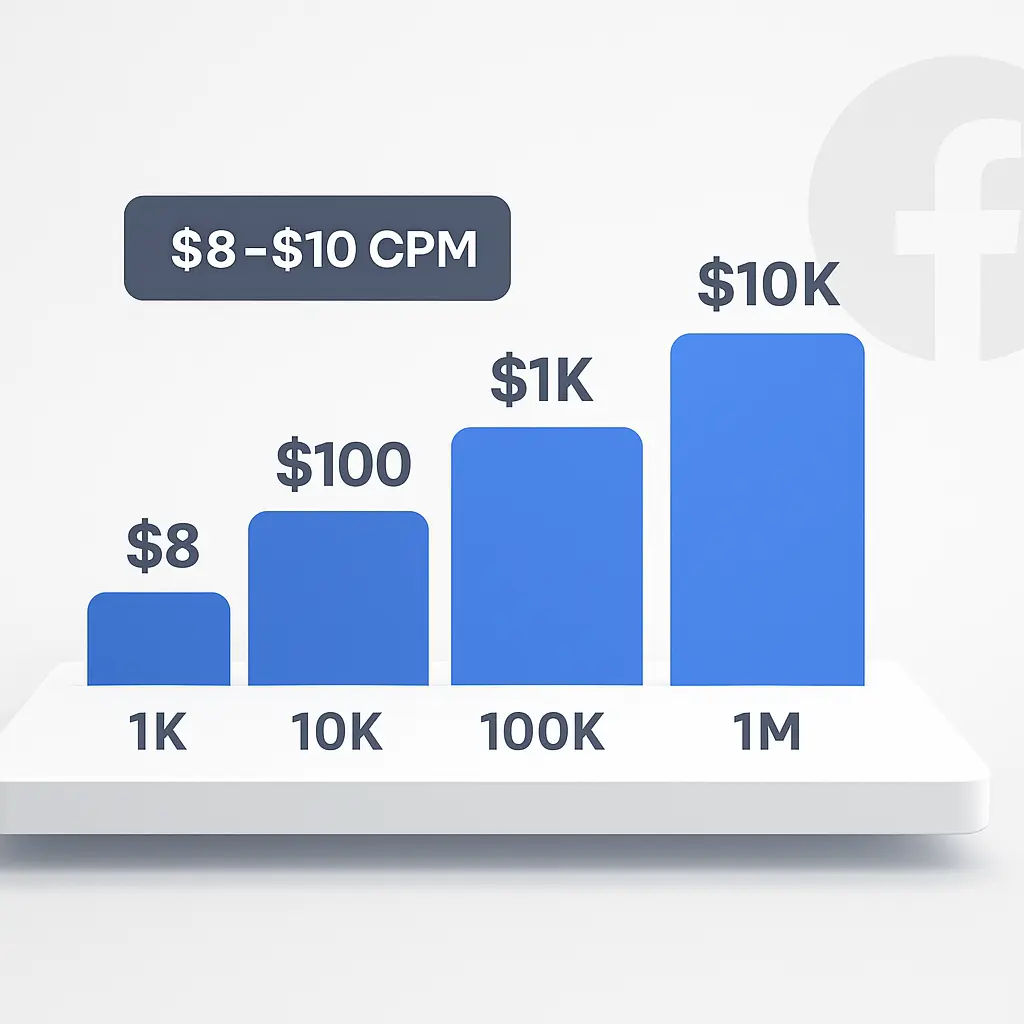
How Much Does Facebook Pay for Views – 1K, 10K, 100K & 1 Million
Understanding exactly how much Facebook pays per view count helps creators set realistic earning goals. Although the payout isn’t fixed, the following breakdown shows average 2025 estimates based on CPM (Cost Per 1,000 Monetized Views) and ad engagement.
| Views | Average Earnings (USD) | Key Notes |
| 1,000 | $8–$10 | Minimum threshold for ad revenue |
| 10,000 | ≈ $45–$50 | Depends on niche & viewer location |
| 100,000 | $800–$1,000 | High retention boosts CPM |
| 1 Million | $1,000–$10,000 | Large range due to ad density |
| 1 Million + | $10,000 + potential | Add Stars & brand deals |
These numbers come from average ad CPMs between $2–$10 and the 55/45 revenue split (creator keeps 55%).
For instance, a travel creator with 200 K U.S. views might earn $1,200–$1,400, while the same count from lower-CPM regions (India, Philippines) might bring $300–$400.
Pro Tip: Focus on quality over quantity. A single video with high retention can earn more than five low-engagement uploads.
What Do “Views” Actually Mean on Facebook?
Not every view earns you money. Facebook counts views in several ways, but only monetized views, where an ad is served or a viewer watches long enough, generate revenue.
| View Type | Counted When | Monetized? |
| Basic View | 3 seconds watched (autoplay) | ❌ No |
| Monetized View | 30 + seconds or ad watched | ✅ Yes |
| Reels View | 1 second, if ad/bonus eligible | ✅ Conditional |
In short:
- If a user scrolls past your video within 3 seconds → no payment.
- If they watch ≥ 30 seconds or an ad → eligible for revenue.
- Longer watch time = more ads = higher payout.
Optimization Insight: Encourage viewers to stay past the 30-second mark by adding hooks, movement, and captions early in your video.
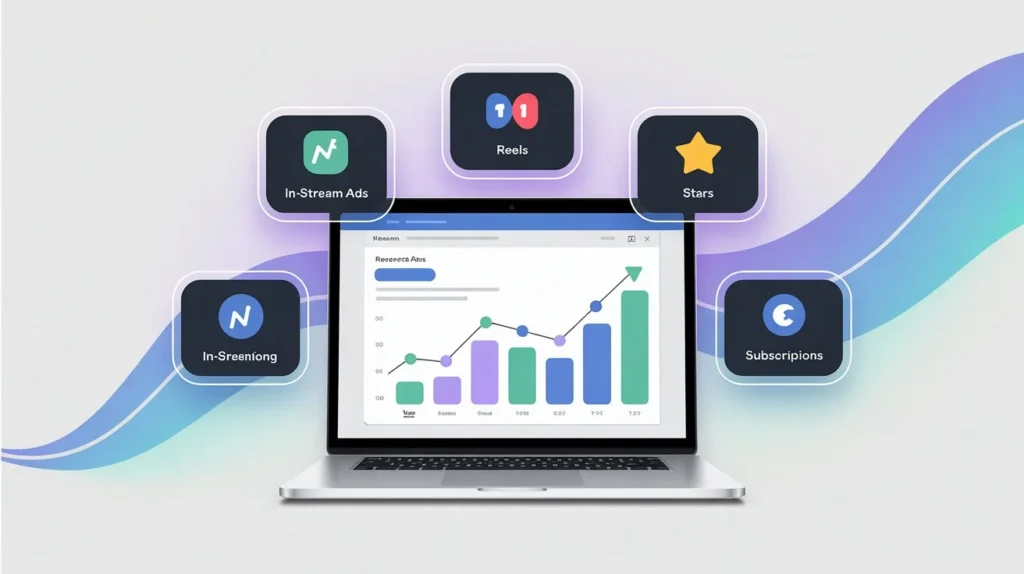
What Are the Ways to Earn Money from Facebook Views?
Facebook offers several parallel monetization systems, letting creators combine multiple revenue streams.
1. In-Stream Ads
For videos at least one minute long (three minutes recommended).
Ads appear before, during, or after content. Facebook keeps 45%, creator gets 55%.
Best For: Tutorials, explainers, gaming clips, or product demos with sustained watch time.
2. Facebook Reels (Short Videos)
Facebook Reels use short-form content (under 90 seconds).
Creators can earn through Overlay Ads, Performance Bonuses, and region-specific Reels Play programs.
Although the formal bonus program was paused in some regions, 2025 brings new tests for Reels Overlay Ads, paying creators based on ad impressions and engagement.
3. Facebook Stars
Fans can send virtual Stars during lives or premieres.
Each Star = $0.01, paid directly to the creator.
💬 Example: 10,000 Stars = $100.
It’s a consistent passive revenue stream for active livestreamers.
4. Subscriptions
Creators can charge followers a monthly fee for exclusive content.
- 100% of the fee goes to creators via desktop.
- ~70% on mobile (after app store deductions).
Subscriptions help build predictable, recurring income and brand loyalty.
5. Brand Collaborations & Sponsored Content
Businesses pay to feature their product or service in your videos.
These deals often outperform ad revenue if your engagement is strong.
Example: A tech influencer with 50 K followers might earn $500–$1,000 per sponsored post.
6. Facebook Stories Monetization (2025 Pilot Program)
Meta is gradually rolling out ad placements inside Stories for eligible pages, similar to Instagram’s ad model.
Creators will earn based on reach and completion rates.
Note: Combining Reels + Stories boosts exposure and multiplies revenue opportunities.
How Much Does Facebook Pay for Reels?
Facebook Reels are short, high-impact videos designed for virality and monetization.
While payouts vary, most creators report earning $8–$10 per 1,000 monetized Reels views, mirroring In-Stream ad averages.
Under 2025’s system:
- Reels can feature Overlay Ads (static banners or stickers).
- Creators are paid per impression and engagement.
- Selected regions get performance-based bonuses.
To qualify, your page must meet Reels monetization criteria, which differ slightly from standard In-Stream Ads.
High engagement and originality are critical.
Pro Tip: Keep Reels between 15 to 30 seconds, include strong captions, and post consistently since Facebook’s algorithm favors daily or alternate-day activity.
What Affects How Much Facebook Pays You?
Even if two creators hit the same view count, their payouts can be miles apart. That’s because Facebook’s monetization rate depends on multiple factors that shape your CPM (Cost Per 1,000 Monetized Views) and overall revenue.
1. Audience Location
Advertisers pay more for audiences in countries like the U.S., U.K., Canada, and Australia, where purchasing power is higher.
Views from these regions can earn 5× more than those from lower-income countries.
Example: A video viewed primarily in the U.S. might earn $8–$10 CPM, while the same content in India averages $1–$2 CPM.
2. Video Length and Watch Time
Longer videos allow more ad slots, increasing revenue.
The ideal duration for monetized videos is 1–3 minutes for Reels and 3–5 minutes for standard In-Stream content.
Tip: Add a strong mid-roll hook at 45 seconds to retain viewers and unlock mid-roll ads.
3. Engagement Rate
Facebook’s algorithm favors videos that spark interaction.
Likes, shares, comments, and replays increase your reach, leading to more monetized impressions and higher earnings.
Pro Insight: Aim for an engagement rate of at least 4–6% to keep your content in Facebook’s recommended feed.
4. Content Quality and Niche
Not all topics pay the same.
High-value niches such as finance, tech, or business attract premium advertisers..
On the other hand, entertainment or meme pages often have lower CPMs due to broad, low-spending audiences.
5. Ad Type and Placement
Facebook uses pre-roll, mid-roll, and post-roll ad formats.
- Mid-roll usually pays the highest because viewers are already engaged.
- Non-skippable ads yield better CPMs than skippable ones.
Note: Ad fill rate and advertiser competition during specific months (e.g., holidays) can cause CPMs to surge.
6. Seasonal Demand and Advertiser Budget
Earnings typically spike during Q4 (October–December) when brands increase ad spending for holidays.
Similarly, CPMs can dip in January–February when marketing budgets reset.
Data Point: Average CPC on Facebook ranges from $0.80–$0.94, while CPM fluctuates between $2 and $10, depending on demand.
7. Ad Performance Metrics
Facebook rewards creators whose ads perform well.
Key metrics include:
- CTR (Click-Through Rate)
- Ad Watch Time
- Viewer Retention Rate
Videos that maintain higher CTR and retention earn more per view.
Proven Tips to Increase Your Facebook Video Income
Facebook monetization isn’t about luck—it’s strategy. Here’s how successful creators consistently raise their payouts:
1. Hook Viewers in the First Three Seconds
Your opening moments decide whether someone stays or scrolls away.
Use motion, emotion, or a question to capture attention instantly.
Example: Instead of “Today I’ll show you,” start with “Most creators miss this trick—and it’s costing them thousands!”
2. Use Captions and Eye-Catching Thumbnails
Over 80% of Facebook users watch videos without sound.
Add accurate captions and a bright, high-contrast thumbnail with a human face to drive engagement.
Pro Tip: Keep thumbnail text under 5 words and avoid cluttered designs.
3. Publish Consistently and Time Your Posts
The algorithm favors active creators.
Post at least 3–5 times per week and schedule uploads when your audience is most active.
Use Meta Business Suite Insights to identify the top engagement hours.
4. Use Creator Studio Analytics
Facebook’s Creator Studio offers detailed insights—drop-off points, average watch time, and audience demographics.
Reviewing this data helps you fine-tune your future content.
5. Optimize Video Length for Retention
Keep In-Stream videos between 3–5 minutes and Reels under 30 seconds.
This length keeps engagement high while maximizing monetization opportunities.
Pro Tip: Use pattern interrupts such as cuts, zooms, or on-screen text to reset viewer attention every 10 to 15 seconds.
Bonus Tip: If you ever notice unusual color tints or screen discoloration on your MacBook while editing videos, check this quick guide on Orange Discoloration MacBook Pro Fixes & Prevention to keep your visuals sharp and professional.
6. Leverage Cross-Posting
Upload videos across Facebook Pages, Groups, and Instagram.
Cross-posting boosts total watch minutes and expands your monetized reach.
7. Build Community Engagement
Reply to comments, go live, and feature fan feedback in new posts.
Stronger community = more repeat viewers = higher earnings.
💰 Quick Formula: Engagement + Retention + Watch Time = CPM Boost.
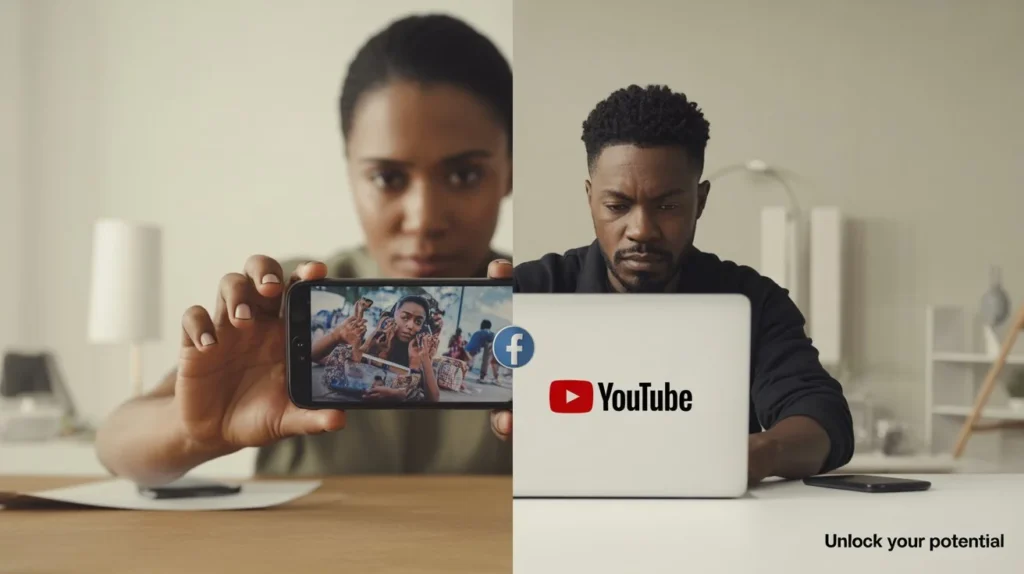
Facebook vs YouTube Monetization: Which Pays More?
This is one of the biggest debates among creators. While YouTube offers higher CPMs overall, Facebook gives faster reach and flexible monetization tools.
| Platform | CPM Range | Strengths | Weaknesses |
| $2–$10 | Multi-format earnings (Reels, Ads, Stars) | Inconsistent payouts | |
| YouTube | $3–$15 | Strong long-form stability | Slow audience growth |
Facebook’s Edge
- Easier to go viral due to social sharing.
- Multiple earning paths (Reels, Stars, Stories).
- Immediate access to global audiences.
YouTube’s Edge
- More reliable ad revenue once monetized.
- Strong SEO visibility and long-term passive income.
- Higher advertiser trust and CPM consistency.
Verdict: Facebook is ideal for creators focused on short-form, high-engagement videos. YouTube remains superior for evergreen, educational, or long-form monetization.
What Other Ways Can You Earn Money on Facebook?
While in-stream ads and Reels bonuses form the core of Facebook’s monetization system, smart creators diversify their income. Here’s how to expand beyond traditional ad revenue.
1. Facebook Stars
During live streams or premieres, fans can buy and send virtual Stars.
Each ⭐ is worth $0.01, and payouts go directly to the creator after minimal fees.
Tip: Call-to-action moments (“Send a Star if you enjoy this tutorial!”) can raise Star income by 25–30%.
2. Fan Subscriptions
Followers can subscribe for exclusive content—behind-the-scenes clips, early access, or bonus Q&As.
- Desktop payments: Creators keep 100%.
- Mobile payments: Roughly 70% (after app-store fees).
Fan subscriptions build recurring monthly income and strengthen loyalty.
3. Branded Content and Sponsorships
Brands pay creators to feature or review products.
Because payment depends on niche authority, CPM equivalents here can hit $20 + per 1 K views.
Use Facebook’s built-in Brand Collaboration Manager to stay compliant.
Pro Example: A finance page with 100 K followers could charge $700 per sponsored video plus ad revenue.
4. Affiliate Links and Product Mentions
Add affiliate links within post captions or pinned comments. When viewers purchase via those links, you earn a commission.
Combine this with Reels or tutorials for powerful hybrid monetization.
5. Facebook Stories Ads (2025 Pilot)
Meta is testing ad placements inside Stories. Early testers report CPMs between $2 and $6 depending on completion rates.
This is ideal for creators with highly visual, snackable content.
Pro Strategy: Use 3 to 4 monetization methods simultaneously, for example Reels, Stars, and affiliate links, to smooth out earnings across months.
Want more expert insights on earning through Facebook, YouTube, and digital platforms? Check out WriteVerge for fresh 2025 creator guides.
The Bottom Line — Turning Views into Revenue
Facebook in 2025 is no longer just a social network. It’s a creator economy. Earnings depend on content quality, watch time, and how well you leverage Facebook’s multiple monetization tools.
To summarize:
- Meet eligibility requirements (10 K followers, 600 K minutes).
- Focus on engagement and retention to raise CPM.
- Diversify income streams with Stars, Reels, Stories, and brand deals.
Facebook won’t make you rich overnight, but with consistent strategy and data-driven creation, it can easily turn into a four-figure monthly side income for serious creators.
Final Tip: Combine In-Stream Ads + Reels + Stars for the most balanced and sustainable revenue model on Facebook in 2025.
FAQs — Quick Answers for 2025
Q1. How many followers or views do I need to start earning?
➡ Minimum 10 K followers and 600 K watch minutes in 60 days. Some programs (like Stars) allow smaller pages with consistent activity.
Q2. How much does Facebook pay per 1 K views?
➡ On average $2–$10 CPM, depending on country and ad demand. Engaged U.S. traffic can push this above $12 CPM.
Q3. How much money is 10 K views worth?
➡ Roughly $20–$100 if those views are monetized and retain watch time beyond 30 seconds.
Q4. How much does 1 million views pay on Facebook?
➡ Anywhere between $1 K and $10 K, depending on CPM and viewer region.
Q5. Does Facebook pay monthly?
➡ Yes. Payments are sent around the 21st of each month for the previous month’s earnings.
Q6. Does Facebook pay for live streams?
➡ Yes — through Stars and occasionally in-stream ads if the stream meets monetization criteria.
Q7. Can I earn with less than 10 K followers?
➡ Some programs like Stars or Reels bonuses accept smaller creators based on engagement rather than follower count.
Q8. Which pays better — Facebook or TikTok?
➡ Facebook pays more for longer, ad-supported videos. TikTok can win for viral shorts but offers lower CPMs overall.
Q9. Is it safe to manage multiple Facebook accounts for content?
➡ Yes, but use tools like Hidemyacc or Meta Business Manager to separate browser environments and avoid policy violations.




